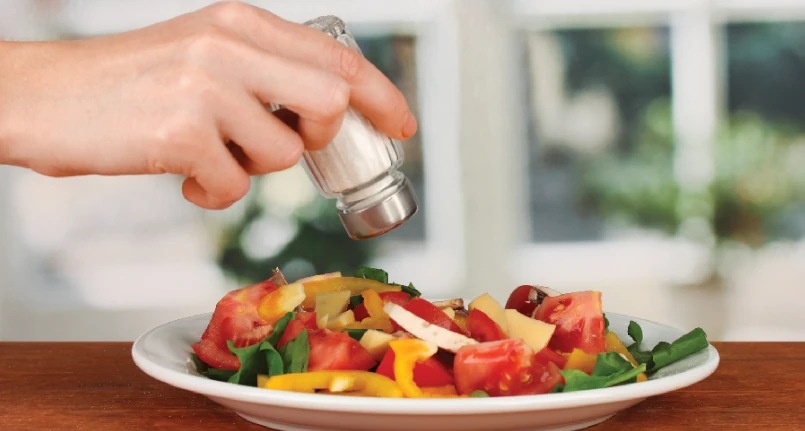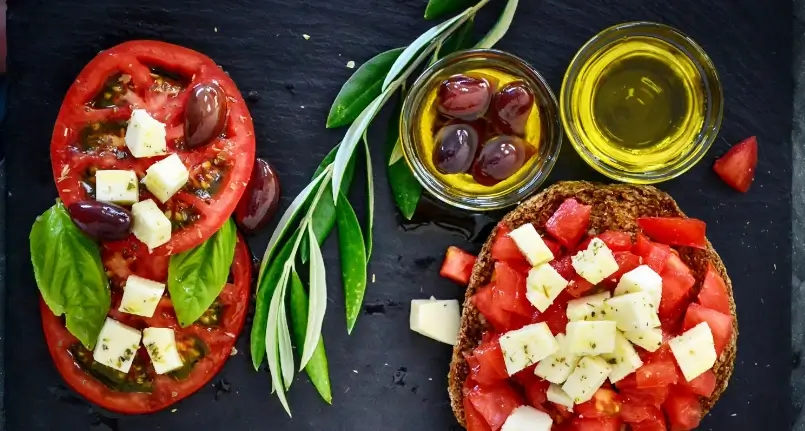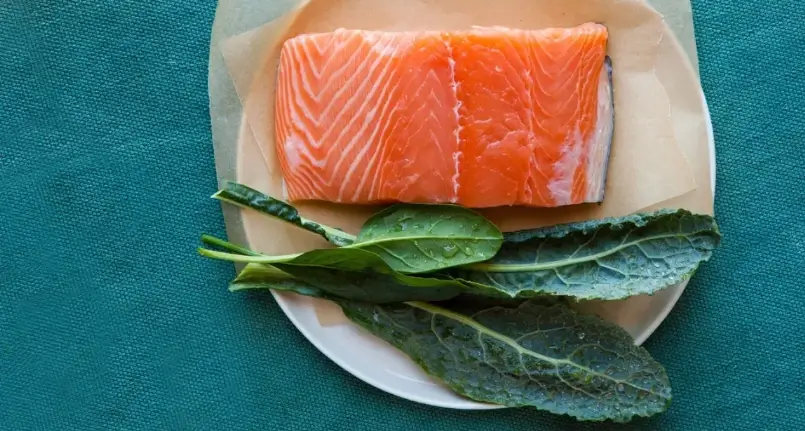Overview of the low sodium diet
“Low sodium diet” means a low sodium diet .
Sodium is an especially abundant mineral in Western nutritional style ; for this reason, contrary to other minerals (such as iron , calcium , potassium , magnesium , etc.), in the vast majority of cases it creates complications due to its EXCESSIVE dietary intake (while a dietary deficiency is quite rare).
Excess sodium in the diet is correlated with the onset of arterial hypertension (AI) .
The hyposodic diet involves the consumption of foods WITHOUT added salt (NaCl), avoiding salty ones in the industrial or home processing phase. Obviously, the low sodium diet also excludes all additive molecules containing sodium, such as sodium glutamate and sodium bicarbonate .
In addition to limiting the sodium intake compared to Western dietary habits, the low sodium diet acts on the complications induced by excess sodium through other aspects of a chemical-nutritional nature. Studies concerning the pressure regulation of the human body have shown that, in addition to the nervous center of regulation, also the vascular tone ( vasodilatationor peripheral vasoconstriction) and the relationship between excretion/reabsorption of nephrons play an essential role in the onset of arterial hypertension. Therefore, taking into consideration that both arterial compliance and renal function are mechanisms strongly influenced by some nutritional molecules, the low sodium diet is structured by intervening not only on sodium but on many aspects of the overall diet .
The low sodium diet is a nutritional therapy aimed at containing the levels of arterial hypertension (defined as when the pressureminimum is permanently higher than 90mmHg and the maximum always exceeds 140mmHg). This metabolic pathology, which proportionally increases the cardiovascular risk , can be induced or favored by some etiological or predisposing elements ; among them we recognize subjective and objective ones. On the other hand, what unites every type of arterial hypertension is the ABNORMAL and non-physiological alteration of the mechanism in question.
Hypertension – outline
Arterial hypertension affects about 20% of the population; moreover, only ¼ of diagnosed hypertensives manage to maintain blood pressure levels within the norm (thanks to adequate drugs and/or behavioral interventions). High blood pressure can be:
- primary (or essential) when it does not depend on other pathologies;
- secondary, when subordinated to cardiac or renal pathologies (only 5% of cases).
Primary hypertension is mainly caused by:
- overweight
- increased tone of the sympathetic nervous system
- decreased renal filtration of sodium
- nervous stress
- sedentary lifestyle and ageing
- genetic factors
- food factors ( sodium excess , potassium deficiency , excess of saturated fats at the expense of essential polyunsaturated fats , hyperglycemia , alcohol abuse, abuse of other nerve agents , etc.).
Among all these elements, some are subjective (such as genetics), others objective (such as food or being overweight) or mixed.
In subjects suffering from hypertension it is possible to intervene on several fronts: diet (low sodium), supplements (see below), level of physical activity (increasing it) and use of drugs ( diuretics , vasodilators , etc., also in combination with each other).
Arterial hypertension can determine and more often contribute to the onset of fatal events such as ischemic heart disease and cerebral vascular syndrome, with the risk of death or permanent disability; what makes it an extremely dangerous metabolic pathology is the absence of significant symptoms until the first admirable clinical signs or complications are diagnosed.
N.B. _ Hypertension exponentially increases its harmful effects when it is associated with type 2 diabetes mellitus , dyslipidemia , obesity and visceral deposits (therefore also with metabolic syndrome , of which it represents a constituent element).
Sodium – outline
Sodium is the major cation of extracellular fluids. Its metabolic function is essential and any defect would certainly prove harmful to the body. However, as anticipated, in the Western diet sodium is typically taken in excess, which is why in the presence of hypertension it is necessary to reduce it through a low-salt diet.
The main functions of sodium are regulation of the extracellular volume, of the osmotic pressure of the extracellular fluids, of the acid-base balance , of the electrophysiological phenomena of the nervous and muscular tissues , of the nervous impulse, etc.
During the renal passage almost all the sodium is reabsorbed and its retention-excretion is modulated by the action of the hormone aldosterone . The ability to expel sodium with urine DOES NOT exceed 0.5-10% and the only obligatory losses of the organism are with faeces and urine (about 7%).
An excess of dietary sodium causes an increase in the osmotic pressure of the extracellular fluids and the consequent recall of intracellular fluids, with an increase in the volume of the former compared to the latter. “Perhaps” it is for this reason that the chronic increase in dietary sodium is directly related to the onset of arterial hypertension.
In the low sodium diet, sodium is reduced through 2 essential measures:
- ELIMINATION of discretionary sodium (the one added in the kitchen through sodium chloride – it constitutes about 36% of the total sodium of a “typical” Italian diet)
- ELIMINATION of manufactured foods that contain added sodium (all foods processed by salting or containing certain additives ).
PLEASE NOTE: fresh and unprocessed foods “rarely” contain high concentrations of sodium, with the exception of bivalve molluscs , which are in any case poorer in minerals than cured meats , cheeses , salted or pickled foods , snacks , fried foods , etc.
Low sodium diet – not just sodium
It has already been mentioned in the course of the article that the low sodium diet is NOT simply based on the abolition of discretionary salt and food products that contain added sodium; in particular, the low sodium diet FOR THE HEALTHY SUBJECT (who does not have primary renal or other impairments) guarantees:
- Energy intake aimed at achieving or maintaining the ideal BMI and abdominal circumference in terms of reducing cardiovascular risk
- An excellent supply of potassium , magnesium , calcium and water
- A minimal intake of saturated or hydrogenated fatty acids (and indirectly also of cholesterol ) as opposed to a generous intake of essential polyunsaturated fatty acids, especially of the ω‰3 family ( EPA , DHA and α-linolenic acid )
- A suitable load and glycemic index , therefore moderate
- Little or no intake of alcohol and nerve agents (e.g. caffeine ).
Furthermore, the low sodium diet must be STRICTLY associated with:
- to the abolition (if any) of smoking
- the regular practice of a protocol of physical motor or sports activity, consisting of sessions of an aerobic type (predominantly) and possibly also of an anaerobic type .
- In addition, it is recommended to significantly moderate the sources of social – psychological stress.
Hyposodic diet “in practice”
Having already listed the key nutritional principles of the low-sodium diet, the practical “commands” to be able to implement it will be explained below:
- If you are overweight or obese, reduce ALL portions by 1/3 (about 30%).
- Consume at least 5 meals a day (quantities and portions are easily identifiable; the meal is correct if appetite arises 120-180′ after the end )
- Eliminate the salt and the stock cube from the wall units and shelves of the house (so as not to fall into temptation)
- Discard all types of cans, jars, jars, cans, snack bags, etc. present in the pantry and on the shelves at home; Preserved foods are ALWAYS high in sodium or sugar or alcohol. Even pickled foods have undergone processing ( cooking ) in water and salt
- Eliminate junk-food in the pantry and on the shelves at home
- Replace all preserved foods or derivatives with fresh ones; eg:
- raw ham with steak;
- tuna in oil or brine with fish fillet ;
- seasoned cheese with milk or yoghurt (eventually, with fresh cheese );
- jams or fruit preserved with fresh fruit;
- canned greens with fresh vegetables ;
- POSSIBLY replace pasta , bread (especially preserved baked goods ) and refined starchy foods with WHOLE and WHOLEMEAL cereals and legumes (boiled or in the form of risotto or minestrone ),
- Replace meat with oily fish as much as possible since it is rich in ω‰3 ( fresh tuna , alletterato , amberjack , bonito , greenhouse, leerfish , dolphinfish, mackerel , lanzardo , anchovy , sardine , herring , garfish , boga etc.)
- Season raw with vegetable oils rich in omega-3 ( soy ,hemp , walnut , kiwi etc.) and cook only with extra virgin olive oil
- Replace normal water with low sodium water
- Limit coffees to a maximum of 2 per day and alcohol to a maximum of 2 alcohol units per day
- Eliminate smoking
- Carry out motor physical activity daily for 40-60 minutes
- Limit stressful situations
Supplements to be associated with the hyposodic diet
The supplements useful in the case of a low sodium diet are those that meet the nutritional needs NOT achieved through the diet itself. Generally, with a good level of physical activity, caloric expenditure is high enough to allow the achievement of the recommended rations through the consumption of foods only; on the other hand, cases of low-salt diets for very elderly , bedridden, infirm, obese , sedentary , etc. subjects, who need such a restriction as not to always guarantee all the nutrients in adequate quantities, are not uncommon. In this case, the supplements of:
- Potassium: which, being the main intracellular cation, has an effect diametrically opposite to that of sodium; its HYPOtensive efficacy is obviously not proportional to the intake doses but it is still very useful.
- Other mineral salts : especially calcium, iron and magnesium; there are no recommended doses but it would be desirable to take sufficient quantities to cover the subjective needs .
- Polyunsaturated fatty acids of the omega-3 family , possibly mainly EPA and DHA (biologically more active); there are no recommended doses but it would be useful to take 0.5 to 2.5% more (compared to total calories ) in addition to those already present in the diet.
Furthermore, a good hypotensive action has been highlighted for:
- Arginine amino acid
- Diuretic and/or hypotensive plants, extracts and plant derivatives .
Conclusions – efficacy of the low sodium diet in the treatment of hypertension
The low sodium diet is always effective in reducing blood pressure , but the extent of the obtainable improvements depends greatly on the pathological nature and underlying causes .
In secondary hypertension, the low sodium diet subordinates the treatment of the primary diseases and assumes a marginal or even optional role. For the primary forms, on the other hand, it is more incisive; when hypertension is mainly caused by being overweight, the most important nutritional aspect is that of conferring a negative caloric balance and promoting weight loss . Conversely, when overweight is moderate and a diet rich in salty foods is highlighted, the low sodium diet is crucial. Finally, if there is the suspicion of a strong genetic and hereditary component, the low sodium diet is important but acts as a complement/preventive agent to be inevitably associated with pharmacological therapy.




